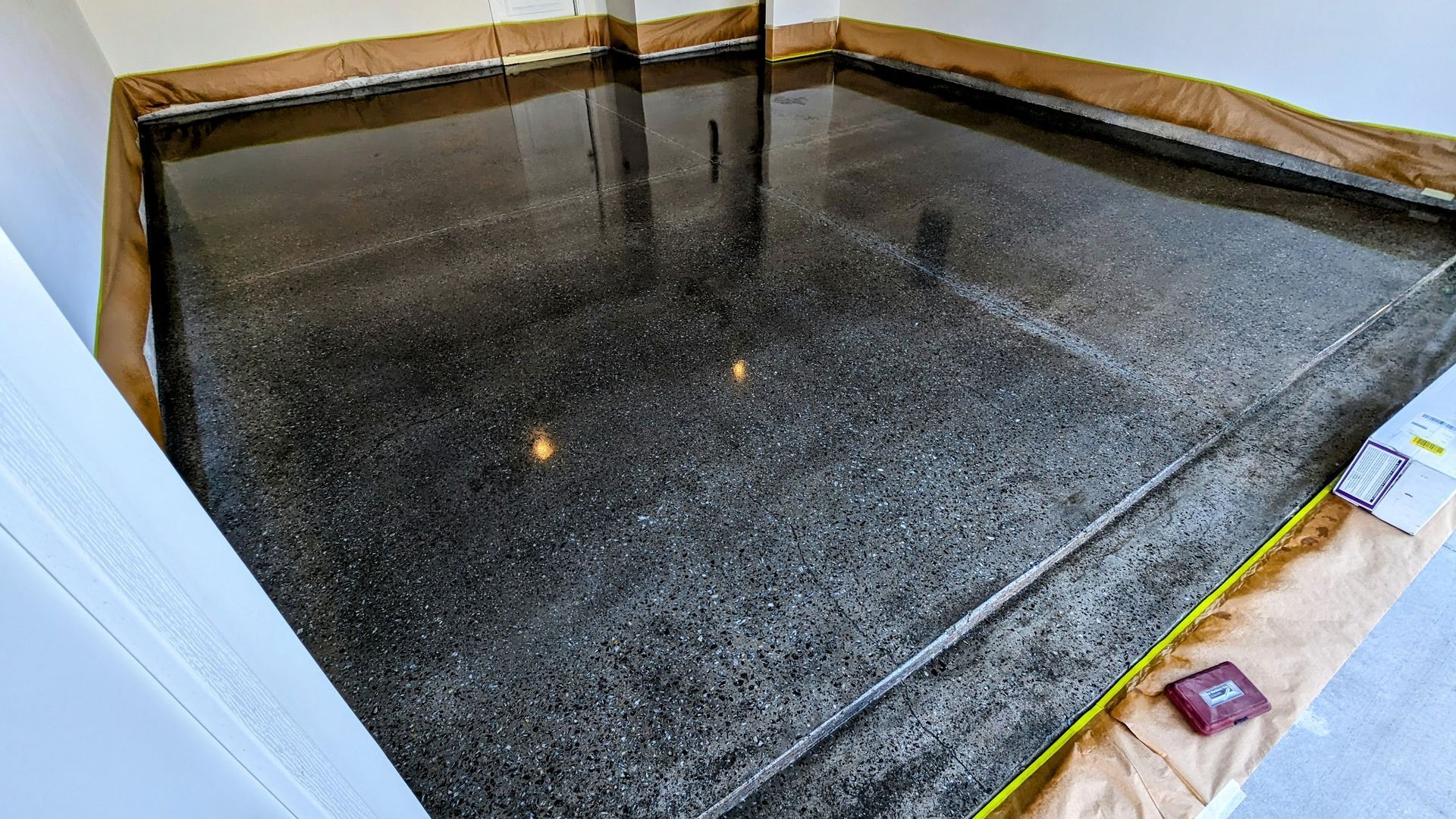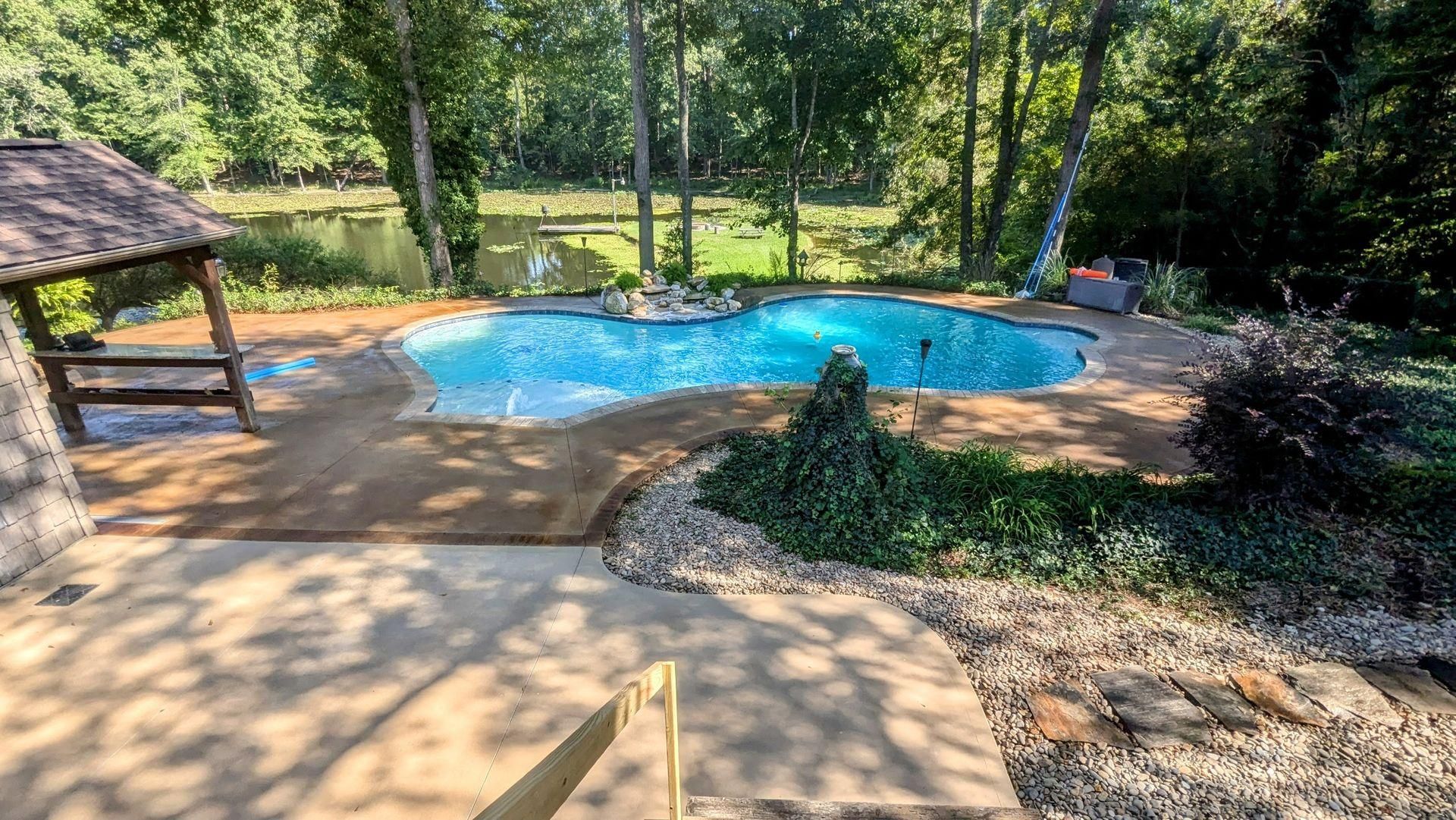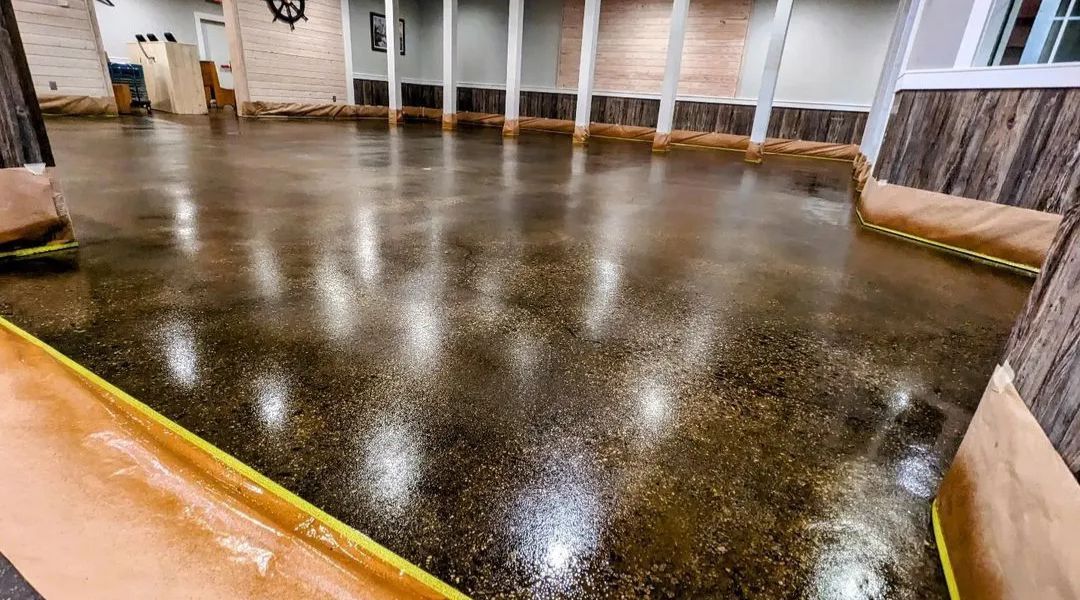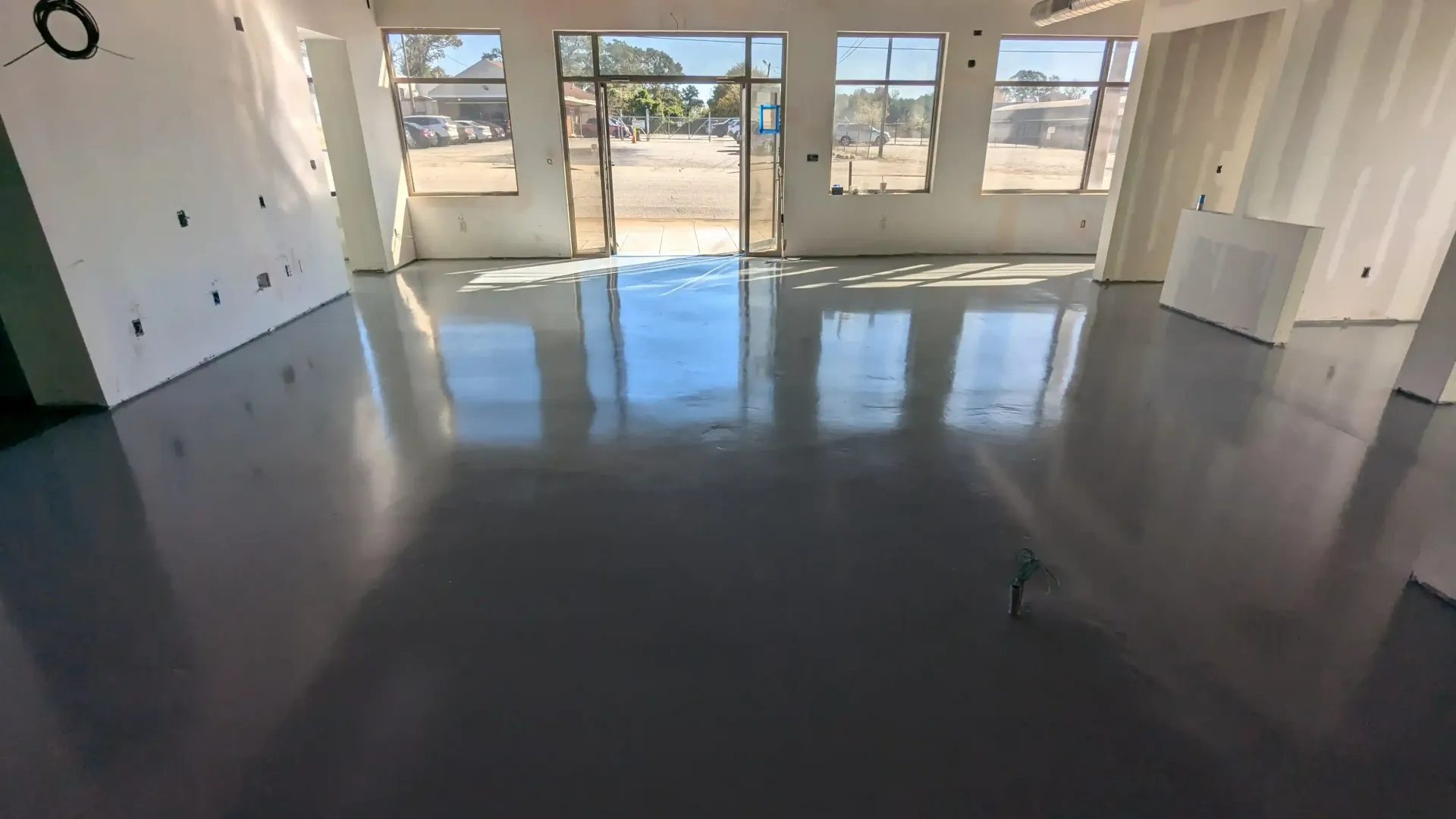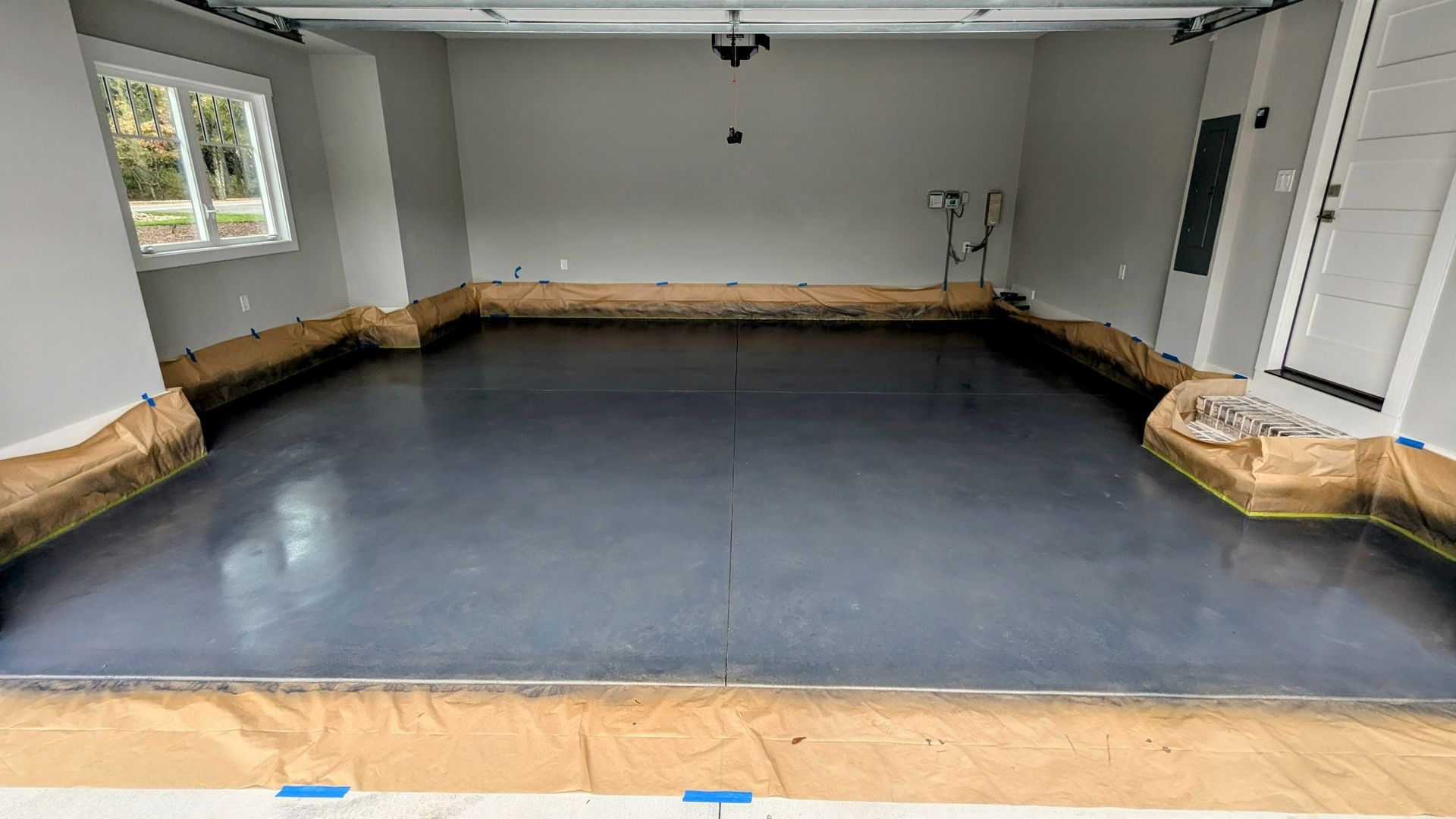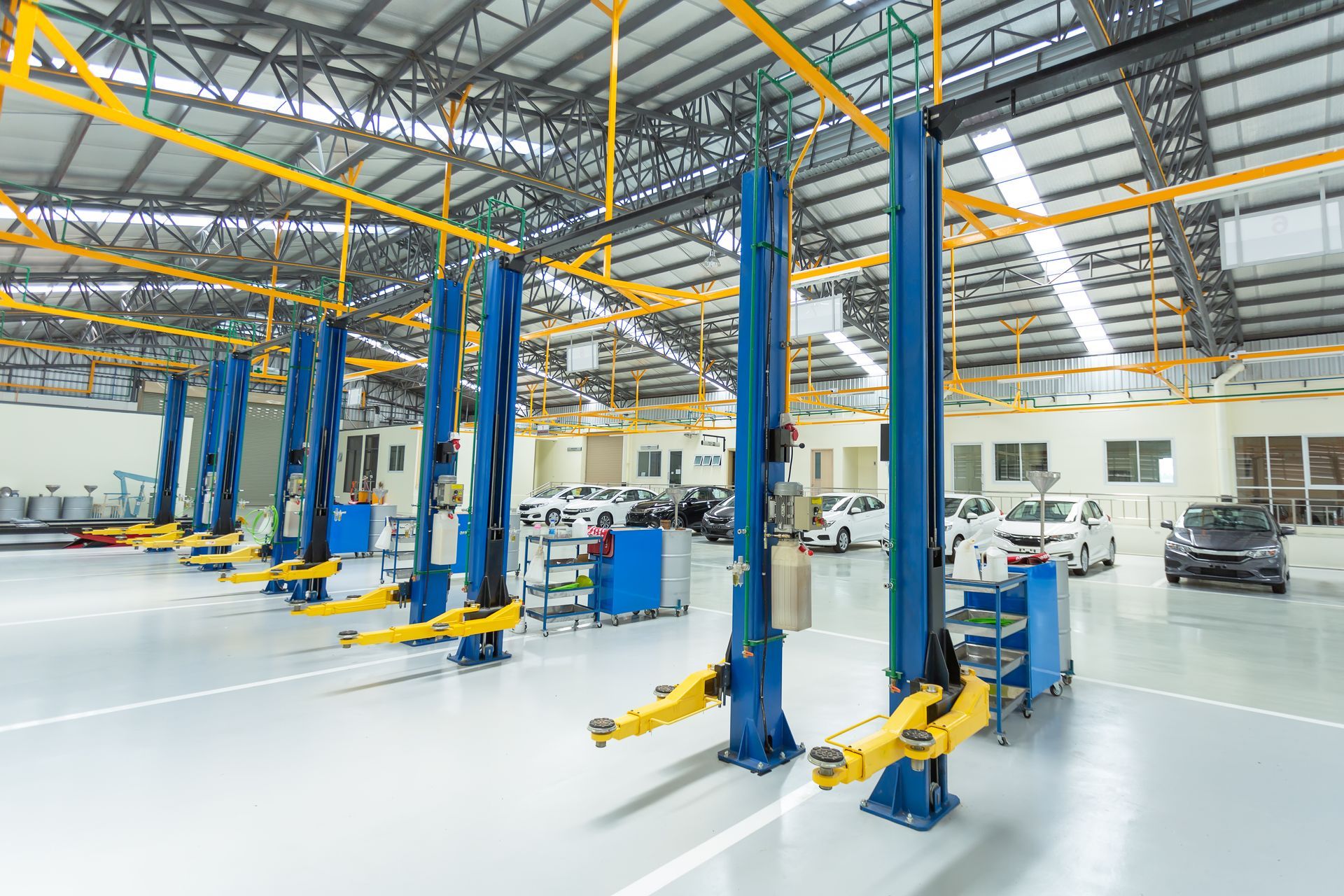Concrete Overlays: Fix Cracks Without Replacing Floors
Got cracks in your concrete? Stains, chips, or rough spots? You don’t always have to rip it out.
A concrete overlays is a thin layer that goes over your old floor. It covers the damage and makes it look new again. It’s simple, fast, and costs less than starting over.
It also lets you upgrade the look with decorative textures or colors.
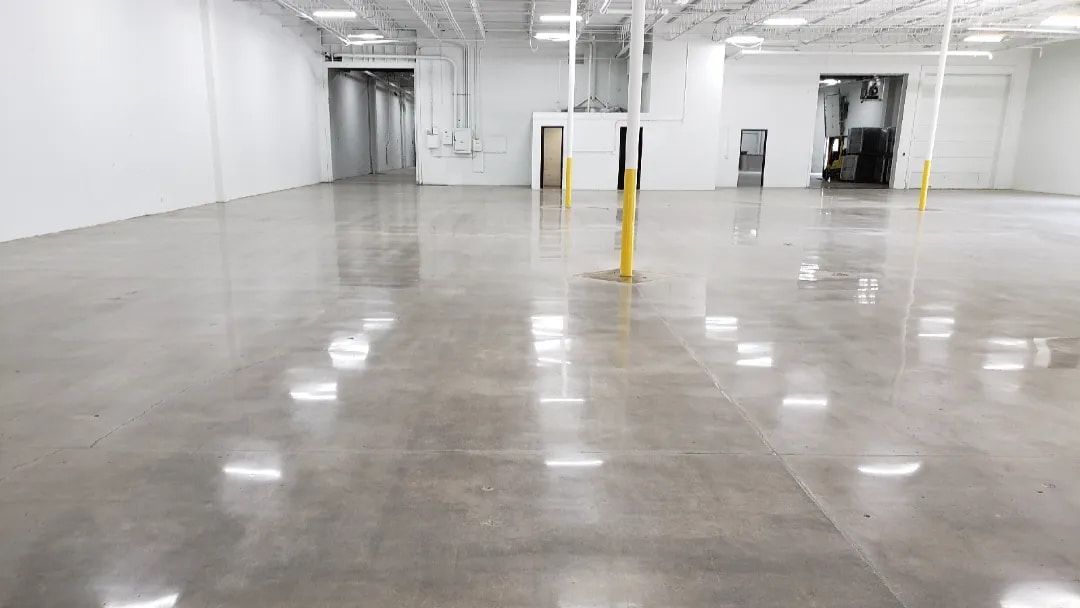
What Is a Concrete Overlay?
A concrete overlay is a thin layer of concrete that goes over an old floor. It covers cracks, stains, and rough spots. It’s not paint. It’s not a patch. It’s real concrete mixed with bonding agents made to stick to the surface. Once it dries, the floor looks new again.
Overlays are used on patios, driveways, garages, and indoor floors. They’re a simple way to fix damage without ripping the whole thing out. They can also be customized with stamped patterns, stains, or textures to mimic tile, wood, or stone.
When Is It a Good Idea?
A concrete overlay works when:
- Cracks are small
- The surface is mostly flat
- The concrete underneath is solid
It won’t work if:
- The concrete is breaking apart
- There are large holes or deep cracks
- The ground under the slab is sinking
If the base is solid, an overlay can fix the surface. If not, the damage will come back. In some cases, you may need slab repairs or leveling before applying an overlay.
Why Use an Overlay Instead of Replacing the Floor?
If the concrete is still solid, there’s no need to tear it out. An overlay is just easier.
Here’s why:
- It costs less
- It’s quicker to finish
- No loud or heavy machines
- Not as much mess
- Still looks clean and fresh
Ripping out a whole floor can take a week or more. An overlay? Usually done in a day or two. It saves time, saves money, and gets the job done. And with decorative options, it can improve the look without increasing the cost too much.
If you're thinking about stamped finishes, custom patterns, or upgrading your outdoor surfaces, check out
these concrete design ideas for inspiration.
How the Process Works
Here’s how a concrete overlay is done:
- Check if the concrete is solid
- Clean the surface
- Fill small cracks or holes
- Apply a bonding layer
- Spread the overlay
- Smooth it out or add texture
- Let it dry
- Add a sealer
That’s it. No digging. No hauling. Just a new layer on top. Drying time varies by product but is often ready for light use in 24 to 48 hours.
This process only works when the existing slab is in decent shape, major issues may require full replacement or new concrete installations for patios, driveways, sidewalks, foundations.
What Problems Can It Fix?
A concrete overlay can last 10 to 15 years.
It can fix:
- Small cracks
- Stains or faded spots
- Uneven floors
- Chipped edges
- Slippery areas near pools
It can also improve traction, reduce dust, and protect older slabs from weather damage. You can choose a design that looks like brick, tile, or stone. It covers the damage and gives your floor a fresh look.
How Long Will It Last?
A concrete overlay can last 10 to 15 years.
It lasts longer if you:
- Clean it regularly
- Reseal it every few years
- Avoid dragging heavy items on it
- Avoid harsh weather exposure if not sealed properly
Simple care helps it stay in good shape. In commercial areas with heavy use, maintenance may need to be more frequent.
How to Take Care of It
Concrete overlays don’t need a lot of work, but a few simple steps can help them last longer.
- Sweep or mop often
- Clean spills right away
- Don’t use strong cleaners
- Reseal every 2 to 3 years
- Repair small chips early
Doing these things keeps the surface looking good and helps prevent damage. Using felt pads on furniture and avoiding high-impact equipment also helps protect the overlay.
How Much Does It Cost?
A concrete overlay isn’t too expensive, but the price can change based on a few things.
- Basic overlays cost around $3 to $10 per square foot
- Decorative ones cost around $8 to $20 per square foot
The cost depends on:
- How much repair is needed
- How big the area is
- The pattern or look you want
- Where you live
It’s a good idea to get a quote first so you know what you’re paying for.
Should You Do It Yourself?
You can, but it’s easy to mess up. If it’s not done right, the overlay can crack or peel.
A professional will:
- Check if the concrete is solid
- Use the right tools
- Make sure the overlay sticks
- Seal it the right way- Choose the correct overlay mix for your specific surface
DIY attempts often fail due to poor surface prep or incorrect mix ratios. It’s best to hire someone with experience to avoid wasting time and money.
Overlay First, Replace Later (If You Even Need To)
Concrete overlays fix small cracks and worn spots without replacing the whole floor. They’re quick, easy to take care of, and can last for years. If the floor underneath is still strong, an overlay is a smart way to make it look good again. It’s a cost-effective option that also gives you design flexibility and protects the surface beneath.
